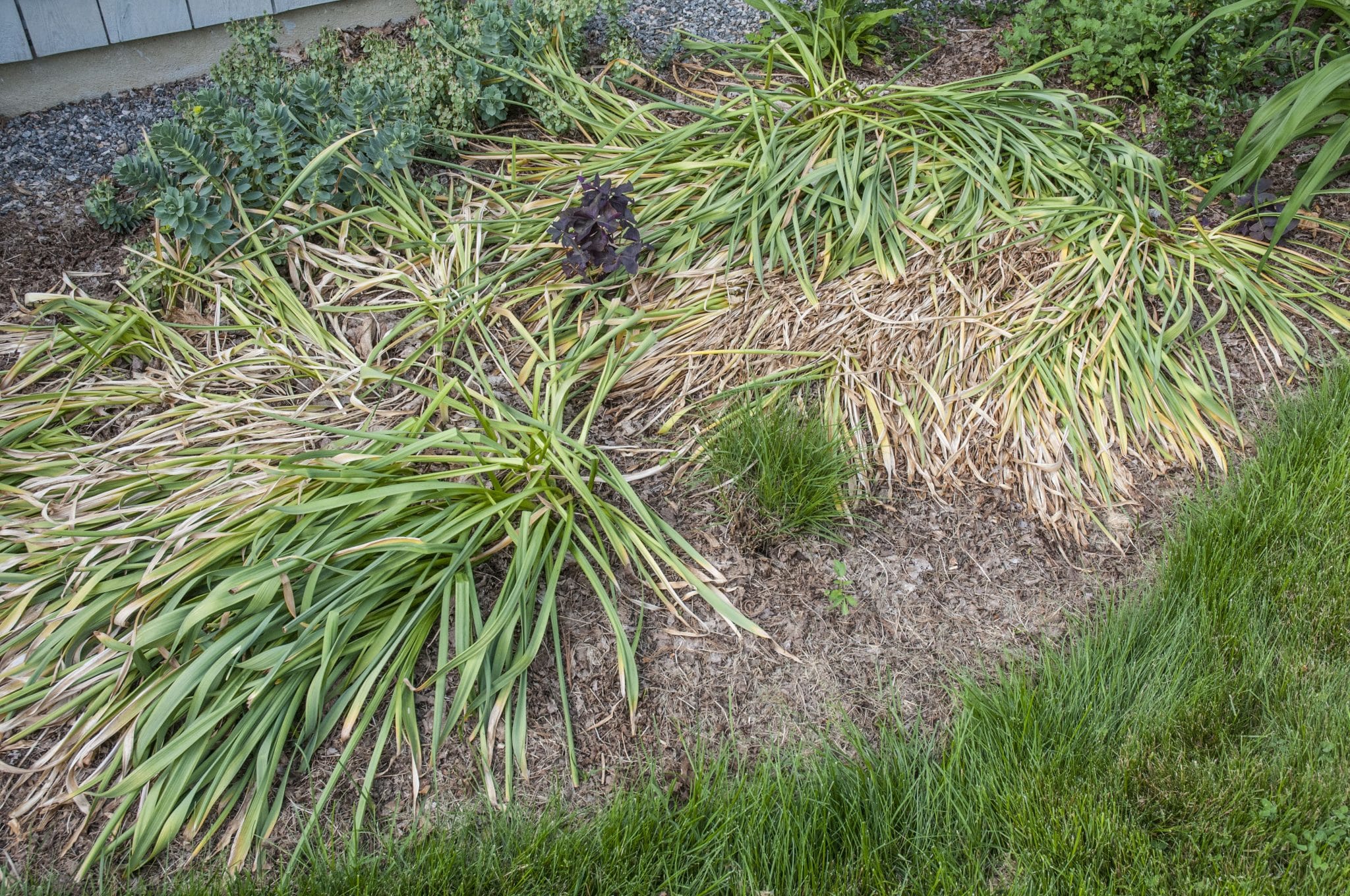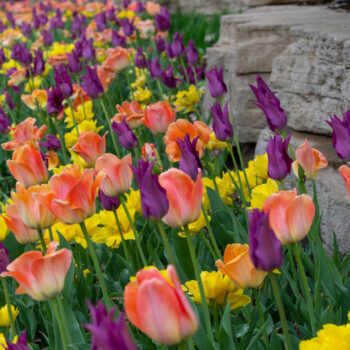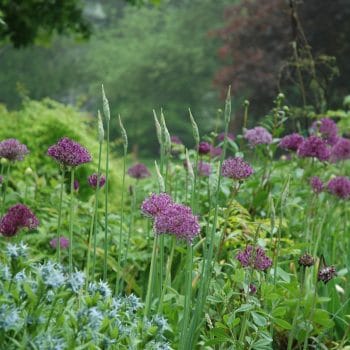
Most spring-flowering bulbs require no special attention after bloom. If you find the spent flowers unsightly, you can remove them. In the case of tulips, especially perennial tulips, removing the flowers as soon as they fade may also help to encourage the bulbs to bloom the following spring. Simply snap off the top 3 inches of the stems or, for a neater look, cut the flower stems just above the top leaf with a pair of pruning shears. Removing spent tulip flowers prevents seed formation and focuses energy instead on bulb growth.
If you want your bulbs to bloom again next spring, you must allow the foliage to turn yellow and collapse. If you cut the leaves before they yellow, you will prevent the bulbs from storing up the energy required to produce next spring’s flowers. The bulbs must be allowed to complete their growth cycle.
How long will you have to wait? It depends on the bulb. The leaves of most small bulbs, such as crocuses, turn yellow about six weeks after they finish flowering. Tulips generally close up shop within a month after bloom. Alliums are faster still. Daffodils generally need a lot more time. Their foliage often takes a full two months to yellow. You may hear of people who braid daffodil leaves or tie them up, but that is almost as harmful as cutting them because it reduces the amount of leaf surface exposed to the sun. For the health of the bulbs, you must let them enter their summer sleep naturally.
Daffodils aren’t the only slowpokes: Camassia, Spanish Bluebells, and Snowflakes also take a long time to go dormant. Again, you must be patient if you want the bulbs to flower again next spring.


